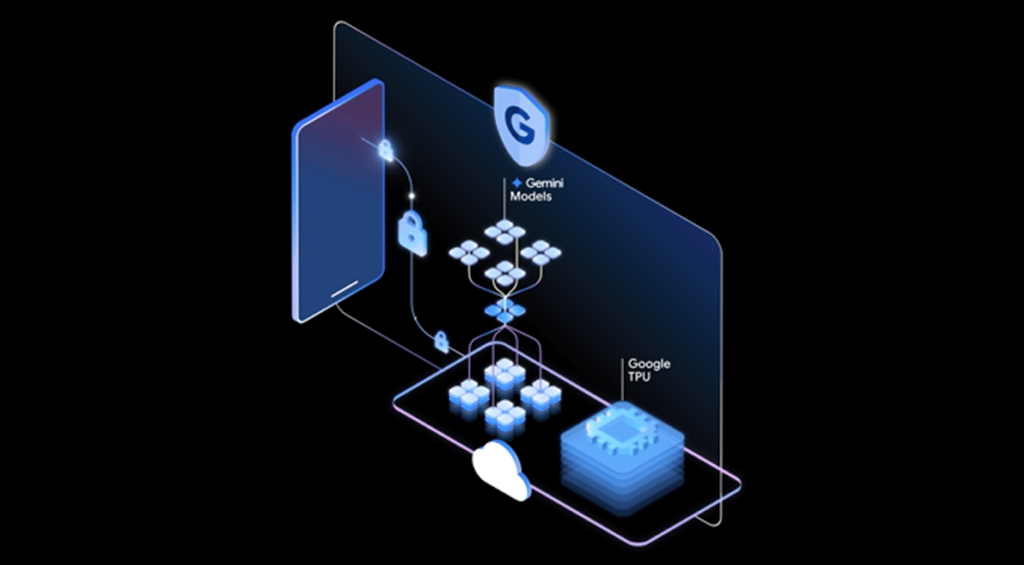Predictive analytics involves using statistical tools to analyze data to determine the probability of future outcomes. It’s the branch of big data specifically focused on forecasting the most likely result of a scenario given a certain set of conditions. This article looks more closely at predictive analytics to explain how it works, why it’s valuable, and how to use it. It also provides a high level overview of some of the tools involved.
The Importance of Predictive Analytics
Predictive analytics is not a crystal ball—it can’t tell you with 100 percent certainty who will win this year’s NCAA basketball tournament. However, you could use it to determine the likelihood that a given team would win—predictive research does not deliver guaranteed outcomes, but it can make guesses and hypotheses a lot better.
Retailers use predictive analytics to determine other products that might interest customers based on purchase history, financial firms use it to capitalize on trends in the financial markets, and utilities use predictive algorithms to determine the likely effect of upcoming weather patterns on customers and to forecast their company’s level of readiness.
Predictive analytics can help make businesses better able to anticipate and respond to challenges. In the real world, this can take many different forms—here are just a few examples.
Supply Chains
During the 2020 global pandemic, severe supply chain issues affected everyone from manufacturers to retailers to consumers—predictive analytics helps companies mitigate this by identifying likely spikes in demand so they can better manage inventory, shipping, and warehousing.
Mortgage and Lending
The 2008 housing market crash touched off a financial crisis and recession in the United States—predictive analytics can help avert a repeat by assessing buyer credit scores and mortgage-backed security risks and forecasting real estate market trends.
Healthcare Industry
Medical providers use healthcare-focused predictive analytics algorithms to diagnose and treat patients based on individual characteristics, and insurance companies use them to analyze historical data for trends that might forecast future events.
Travel
Airlines use predictive analytics to set ticket prices based on historical travel data, and hotels and restaurants can use it to forecast how many guests to expect based on past business in order to maximize occupancy and revenue.
Read our Complete Guide to Data Analytics.
How Does Predictive Analytics Work?
Predictive analytics works a lot like other big data analytics projects. First, companies collect a large quantity of data related to the question at hand—the more data, the better. This data often comes from a variety of sources, so companies use data integration tools to combine inputs. Then they use data quality tools to clean and transform that data into a format that allows them to use their predictive analytics tools.
Next comes the process of developing and training a model. It might be a classification model—which sorts like things into groups—or a regression model, which assigns a number or a score to a set of variables. Organizations might use traditional statistical techniques and sophisticated data mining to generate these models, or they might rely on machine learning.
Once data scientists have developed a model they think will perform well, they deploy it into production. They then monitor its performance and make incremental improvements to the model so that it will become more accurate over time.
Types of Predictive Analytics
Predictive analytics is driven by a variety of models. Here are the most common:
- Regression model—Analyzes the relationship between specific actions and outcomes, and is used to determine whether a variable has an impact on a certain outcome. A regression model can tell you whether a particular type of customer is more likely to make a purchase if you send them an email after they visit your website.
- Classification model—Sorts historical data into a set of categories that can be used to help answer simple questions. This type of model can help a mortgage lender determine if a potential homebuyer is a high risk for default.
- Forecast model—Uses historical data to help estimate the values of new data. A shipping company can use this type of model to determine how many seasonal employees they are likely to need during the holiday season.
- Clustering model—Sorts data into smaller groups based on common characteristics. You can use this data to segment out your email marketing lists to provide more relevant offers to your customers.
- Outliers model—Identifies anomalies in large datasets. Credit card companies use this type of model to proactively alert customers of suspected fraud on their accounts.
- Time series model—tracks and plots data over time so you can use it to predict what might happen in the near future. An emergency department might use a time series model to determine if they might be more likely to have a surge in patients over the coming month.
Learn more: Data Modeling vs. Data Architecture
Benefits of Predictive Analytics
Businesses, nonprofits, healthcare providers, and government agencies benefit from predictive analytics in a variety of ways. For example:
- Businesses can use predictive insights to be more effective in their marketing, optimize their staffing and operations, deepen customer engagement and manage risk.
- Nonprofits can use predictive analytics to increase revenue from fundraising campaigns, improve service delivery and identify areas of need.
- Healthcare providers can use these insights to diagnose patients faster and provide more personalized care.
- Government agencies can use this type of analytics to maintain infrastructure, identify and address economic trends and bolster national security.
Predictive Analytics Trends
From credit scores to actuarial tables, business decision making has been based on predictive analytics data for decades. Vegas casinos have long used a form of predictive analytics to help them decide what kinds of odds to offer on various bets. Predictive analytics is not new—but the sophistication of the underlying technology is.
AI/ML
Artificial intelligence and machine learning (AI/ML) have made it possible to generate insights faster and with fewer inputs and to make actionable data more accessible. The rapid growth of AI/ML tools allow companies of all sizes to incorporate sophisticated predictive analytics into their decision making, glean actionable insights from smaller sets of data and be able to share these insights in real time through dashboards, visualizations and integrations with messaging tools.
Infrastructure
The development of more powerful graphics processing units (GPUs) facilitates the kinds of parallel processing activities necessary for predictive analytics and machine learning. At the same time, storage prices have dropped, making it more affordable to store large quantities of data. Companies can store data in the cloud using data lakes for raw data and data warehouses for processed data, and use a data fabric solution to bring all these disparate sources together without having to create duplicate data sets.
In addition to data fabric tools that streamline the data integration process, increasingly powerful machine learning, data mining, and analytics tools allow companies to perform very complex analysis on very large data sets very quickly.
Artificial Neural Networks (ANNs)
One of the most popular AI technologies for predictive analytics is the artificial neural network. Designed to mimic the human brain, ANNs rely on a layered architecture that yields incrementally improving results.
Data Fabric
With data stored in a multitude of formats and locations, data fabric architecture integrates the myriad data pipelines in both cloud and hybrid environments to provide a holistic solution for the ingestion, management, transformation, and analysis of disparate data.
Industry-Specific Solutions
The first wave of predictive analytics brought a lot of general-purpose tools to the market. These tools were powerful but often required a data scientist to operate them well. The next generation of tools is more tailored for the needs of specific industries or specific use cases, and they are designed to be used by ordinary business professionals who don’t have specialized or advanced degrees.
Edge Computing
While cloud dominates predictive analytics, some jobs are moving out to the edge of the network, particularly in Internet of Things (IoT) environments. In some cases, analyzing data where it is generated and transmitting only the most important insights back to the cloud can prove more efficient and effective.
DataOps
Data management teams are starting to adopt the DevOps and microservices practices that have transformed other parts of IT. As data pipelines become more complex and more critical to business success, enterprises are looking for ways to improve collaboration and streamline processes.
Improved Governance
The combination of high-profile data breaches and the implementation of the European Union’s General Data Protection Regulation (GDPR) has enterprises more concerned than ever about privacy, security, and compliance. More enterprises now have a chief data officer responsible for overseeing big data efforts, including predictive analytics.
Predictive analytics is closely related to several other big data technologies, including machine learning, AI, data mining, and prescriptive analytics. Here are the differences.
Predictive Analytics vs. Machine Learning
Machine learning is the branch of computer science that gives systems the ability to learn without being explicitly programmed. These techniques can be very helpful in building, training and improving predictive models. However, machine learning can also be used for tasks other than predictive analytics.
Predictive Analytics vs. Artificial Intelligence
Machine learning is a subset of artificial intelligence, which attempts to create systems that are good at the kinds of thinking and tasks that humans have traditionally been better at than machines. For example, voice recognition, image recognition and robots are all examples of artificial intelligence. As with machine learning, artificial intelligence can be used for creating predictive analytics models, but AI can also be used for many, many other things.
Predictive Analytics vs. Data Mining
Data mining is the process of finding patterns and relationships in data. It is often part of the predictive analytics process. Organizations will use data mining to find patterns in historical data, and then predictive analytics goes the next step of using those patterns to forecast what is likely to come next. Companies can use data mining to help with predictive analytics, or they can use data mining alone.
Predictive Analytics vs. Prescriptive Analytics
If you think of predictive analytics as taking data mining to the next step, you can think of prescriptive analytics as the next step beyond predictive analytics. Prescriptive analytics not only tell you the likelihood of future outcomes but also the likely results of actions you might take in reaction to those future events.
Essentially, it tells you both what might happen and what you should do about it. Few prescriptive analytics solutions are on the market today, but many industry watchers believe they will become more common in the coming years.
Predictive Analytics Use Cases
Predictive analytics are used across a broad range of industries and businesses. Some of the most common use cases include the following:
- Marketing—Marketing teams use predictive analytics to recommend additional products to customers and to segment email campaigns to provide more relevant messaging to different groups.
- Insurance—Companies use predictive analytics to adjust pricing on policies based on customer behavior or environmental factors, and to detect fraud.
- Healthcare—Hospitals use predictive analytics to identify patients at risk for sepsis or readmission, while researchers use it to create tests that determine if certain types of treatment are effective on patients.
- Logistics—Logistics companies use predictive analytics to optimize routes and forecast future demand to help optimize their operations.
- Real Estate—Agents use predictive analytics to identify who is likely to sell their homes in the coming months and determine the best selling price for a house in a particular neighborhood.
- Transportation and Safety—Government agencies use predictive analytics to identify areas where there are higher likelihoods of deadly vehicle crashes so they can focus infrastructure improvements and enforcement efforts where they are most needed.
Predictive Analytics Techniques
Data scientists and business analysts use both traditional statistical techniques and more advanced predictive algorithms for predictive analytics. Here are the most commonly used predictive analytics algorithms.
| Neural Networks |
A neural network is actually a series of connected nodes (or algorithms) that can recognize patterns in data and output predictive insights. |
| Decision Trees |
Decision trees are similar to flow charts in that they take a set of data and use a series of decisions to classify the data into smaller subsets, which can then be used to generate predictive insights. They can be used for classification and regression models. |
| Bayesian Analysis |
The Bayesian approach uses past probability data to help infer future probabilities of an event. |
| Random Forest |
Random Forest is a machine learning algorithm that combines multiple decision trees to produce a single insight. |
A very long list of startups and more established vendors offer predictive analytics tools. In addition, many comprehensive data analytics platforms include some level of predictive analytics capability. Here are some of the most popular software platforms on the market that includes predictive analytics tools:
Bottom Line
Predictive analytics takes the guesswork out of the equation for businesses in many industries by analyzing historical data and other information to forecast future behaviors or trends. This makes planning easier and limits risk.
Because predictive analytics can be used to plan inventory, establish pricing, and forecast customer turnout, it can increase profits. It can also drive marketing campaigns based on what it determines about past customer behavior and how that is likely to translate into future sales. It can even mitigate the risk of lending to certain borrowers or detect fraud.
New technologies like artificial intelligence and machine learning are changing the way predictive analytics works, making it more powerful, more accurate, and more accessible to enterprises.
Read 5 Ways Brands Can Better User Data Analytics to see other enterprise approaches to incorporating data analysis into all aspects of their work.







